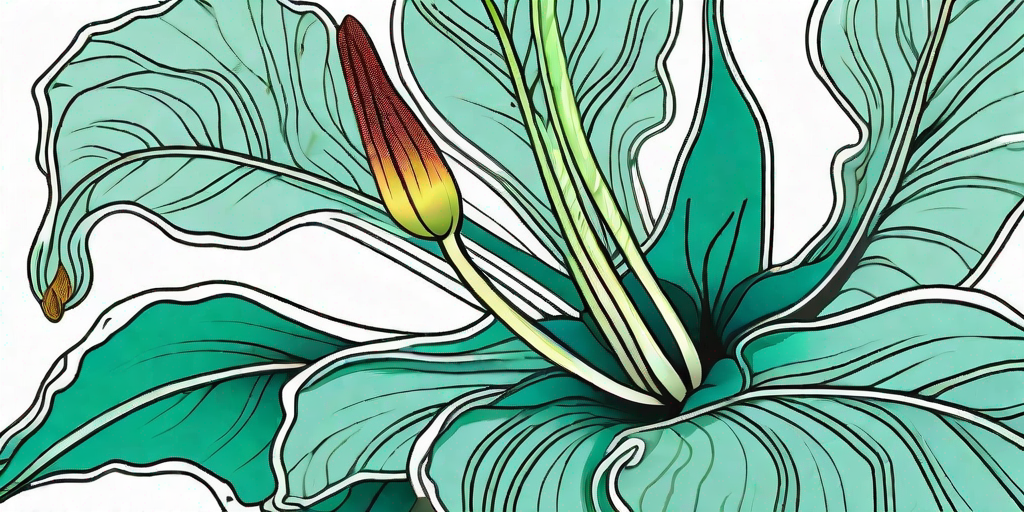
Welcome to the intriguing world of the Voodoo Lily, a plant that is as mysterious as its name suggests. This exotic beauty, also known as Amorphophallus konjac, is a fascinating addition to any garden, with its unique appearance and peculiar characteristics. So, buckle up, green thumbs, as we delve into the captivating realm of this unusual plant.
Understanding the Voodoo Lily
The Voodoo Lily, despite its ominous name, is not a product of dark magic. It's a perennial plant native to warm subtropical to tropical regions of Asia, from Japan and China south to Indonesia. It's a member of the Araceae family, which also includes the peace lily and the philodendron.
What makes the Voodoo Lily stand out is its unique flower structure. The plant produces a single, large, deep purple spadix (the "flower") surrounded by a dark maroon spathe (the "leaf"). This structure can reach up to 1.5 meters in height and emits a strong, distinctive odor that some liken to rotting meat. But don't let this deter you, the Voodoo Lily's peculiarities are what make it a fascinating addition to any garden.
The Life Cycle of the Voodoo Lily
The Voodoo Lily has a fascinating life cycle. It spends most of its life underground as a large tuber. When conditions are right, usually in late winter or early spring, the tuber sends up a single leaf. This leaf, which can reach up to 1 meter in height, resembles a small tree and is used to gather energy for the plant.
After a period of dormancy, the plant will send up its infamous flower. The flower lasts for only a few days, during which it emits its strong odor to attract pollinators. Once pollinated, the flower dies back, and the cycle begins anew.
Caring for Your Voodoo Lily
Despite its exotic origins, the Voodoo Lily is surprisingly easy to care for. It prefers a well-draining soil and a sunny to partially shaded location. While it can tolerate a range of temperatures, it does best in warmer climates and should be brought indoors if temperatures drop below freezing.
Watering should be done sparingly, as the Voodoo Lily is susceptible to root rot. During its dormant period, watering should be reduced even further. Fertilizer can be applied during the growing season to promote healthy growth.
Propagation of the Voodoo Lily
The Voodoo Lily can be propagated through division of the tuber or by seed. Division is the easiest method and can be done in late winter or early spring. Simply dig up the tuber, cut it into pieces, making sure each piece has at least one eye, and plant the pieces in a well-draining soil.
Propagation by seed is more challenging and requires patience. The seeds need to be sown in a well-draining soil and kept at a constant temperature of around 20 degrees Celsius. Germination can take anywhere from a few weeks to several months.
FAQs about the Voodoo Lily
Why does the Voodoo Lily smell?
The Voodoo Lily's distinctive odor is a clever adaptation to attract its preferred pollinators - flies and beetles. The smell, combined with the flower's dark color, tricks these insects into thinking they've found a rotting carcass, a prime spot for laying their eggs.
Is the Voodoo Lily poisonous?
Yes, all parts of the Voodoo Lily are poisonous if ingested. The plant contains calcium oxalate crystals, which can cause irritation to the mouth and digestive system. Therefore, it's best to keep this plant out of reach of children and pets.
Conclusion
The Voodoo Lily is a fascinating plant that is sure to be a conversation starter in any garden. Its unique appearance and intriguing life cycle make it a captivating addition to any plant collection. Just remember to hold your nose when the flower blooms!
So, are you ready to add a touch of the exotic to your garden? With the right care and a bit of patience, you can unleash the mysterious beauty of the Voodoo Lily and become the envy of your gardening friends. Happy planting!















